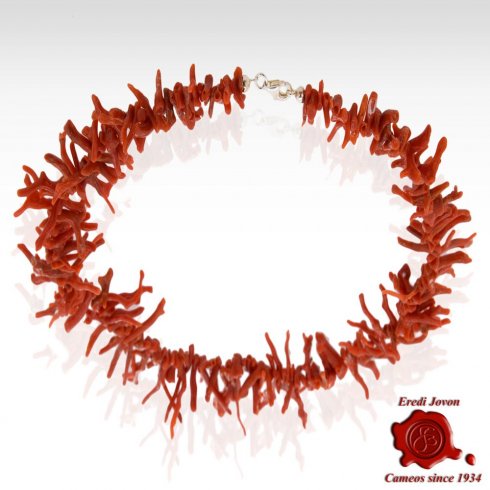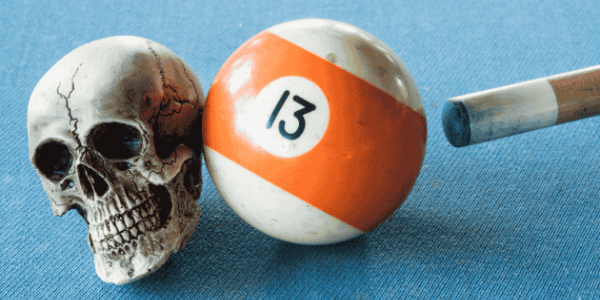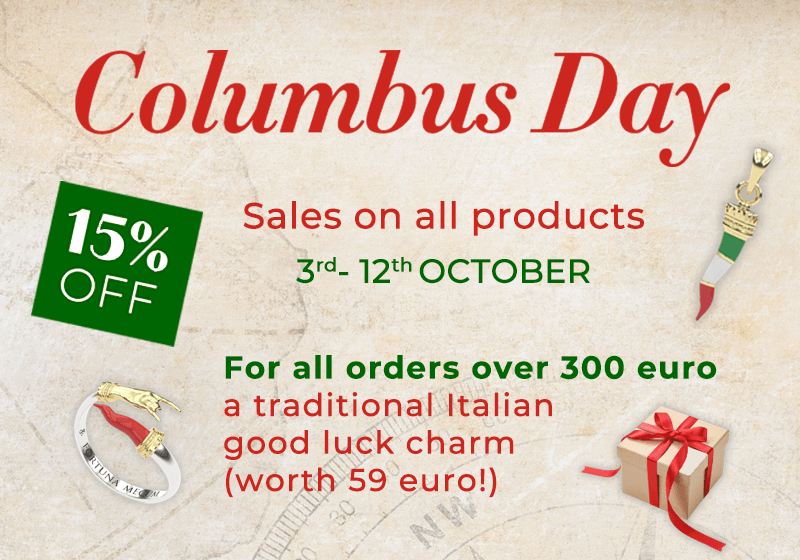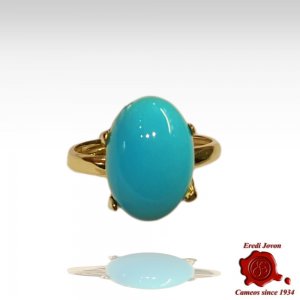The colors of coral: the various qualities and the places where it is fished

Today we are going to talk about the various color shades of the coral in jewelry and its applications in the creation of models and styles in the different countries of origin.
I repeat that this stone has not only a monetary value, even costing 20 times more than gold, but also attributes that affect our body and our mind.
Mediterranean Red Coral
Italian Red coral: that is the corallium rubrum
Let's start from our home, from our "Belpaese": red coral is fished throughout the Mediterranean and it can be said that it is the only sea stone that is uniformly red, naturally and not artificial. If color has been added, be sure it is not true corallium rubrum.
An even more important note: 99% of production comes from Italy. Tip: look for a trusted coral jewelry shop that knows corals well and get ready to spend. If you are looking for the bargain of lifetime you will probably find yourself with a fistful of flies in your hand or simply with a fake jewel.

I give you two tricks:
• Deep Red Coral
Let's immediately dispel a myth: Mediterranean coral is a coral that rarely changes to deep red tones but mostly settles on shades of a beautiful “medium” red.
Chemistry and modern technologies can now imitate everything, so favor the being to the appearance: a clear original necklace is better than a very red and chemically enhanced one.
•Business is always done in two: beware of low prices, especially when the coral is large
Ancient coral jewelry: the ancient orange coral of Sciacca
Do you want to be sure you are buying a unique and particular jewel?
Sciacca Antique Coral from Sicily
Turn your gaze to the "beauty of Sciacca" a very popular coral in the 19th century, one of a kind with orange-tending colors: today it is a rarity and is treated almost like a relic by its owners. At the end of the 19th century, three shoals of this "corallium" with such a particular color were found in the Strait of Sicily, a few nautical miles from the city of Sciacca.

Red Italian Coral Jewelry
Red Italian Coraljewelry in 18 kt Gold or in White Silver 925% - Certificate Included
Red Coral Jewelry
Pacific Pink Coral: from white to dark red
Japanese pink coral: the elatius coral and the various families of the Pacific
If they tell you that a pink coral is of Italian origin, change your coral jewellery shop because either you are facing a scammer or an incompetent and I much prefer the former because you can defend yourself from a thief, from an ignorant never.
N.B. if you want to be picky, there is also an Italian one called "beautiful of Sardinia", but it is very rare.
Pink coral is almost entirely Japanese (for the coral of the land of the "Rising Sun" there are also colors tending to white and red, always characterized, however, by the typical white spot).
Caribbean Black Coral
This octocoral stands out for being a plant that grows in the sea: it is dark brown / black in color and is hard enough to work with.
It is present in the equatorial belt and is processed by local populations who present it as a rarity.
In reality it is a very common gorgonacea with a low commercial value that is sold as a rarity.
In Italy we have many peculiarities and rarities that we are unable to value individually and in the right way: perhaps we should learn from abroad!
In a nutshell for black coral we are not talking about a jewelry stone!
Blue or azure coral
Probably in the various coral families there will be some of this color but they are not part of the typical corals for jewelry.
In reality, turquoise is often confused with blue coral, a stone so closely linked to the ancients.

Turquoise Jewelry
Genuine Turquoise Jewelry Handmade in Italy | Certificate Included
Genuine Turquoise JewelryTurquoise and Red Coral: the evolution of color
The processing of red coral has brought Italian craftsmanship to confront the high peaks of beauty and the "handmade". According to the old proverb that says: “the neighbor's garden is always greener”, red coral is more loved by foreigners than by Italians themselves. Here the Italian jewelers had to find color alternatives to embrace a wider audience: the experience gained on coral jewelry has become invaluable for creating similar objects in other "colors", for example using turquoise or lapis lazuli.
My final advice: don't forget to love what you have on hand, otherwise you risk neglecting it and losing a lot.
As always, I leave you with the biggest hug in the world
Gabriella Jovon
Her you can download for FREE my eBooks

If you loved this post, maybe you would like to go in depth with:
Information
Last post
-

Love Hope Faith Amulet | Meaning and Tradition
Discover the meaning of the Faith, Hope & Charity charm: a timeless amulet to wear every day. A jewel that tells...
-

The Four-Leaf Clover: the rare gift that dares to speak to the heart
Discover the true meaning of the four-leaf clover and its Italian twist with the lucky cornetto charm—a rare story...
-













